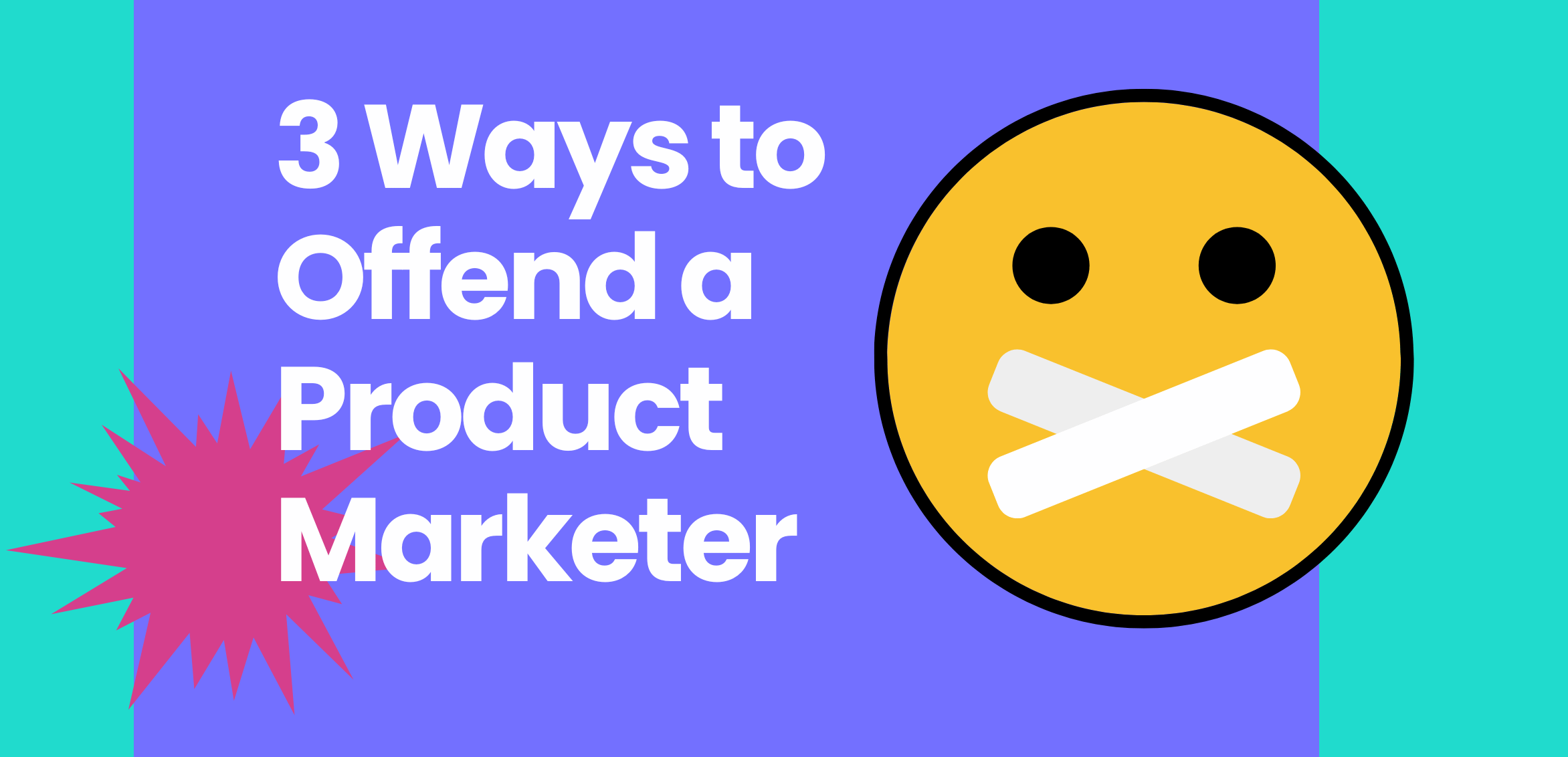Accelerate deals and increase win rates with the leading enterprise demo platform.
3 Ways to Offend a Product Marketer in Six Words or Less

February 12, 2025
Table of Contents
Product marketing is all about offering solutions to customer pain points. But product marketers have plenty of pain points of their own. And they’re not afraid to share.
A Linkedin thread illustrates this in a hilarious (but also insightful) way.
(Trust us, you’ll want to read the whole thread—it’s gold.)
Airing out grievances with a little humor is therapeutic, and we love to see it.
But these common complaints can also offer insights into the biggest pain points in the product marketing community and offer some insightful solutions as well.
- Not understanding what product marketers do
Product marketers aren’t there to make your decks look nice or to mindlessly churn out sales and marketing collateral. In fact, there’s a pretty widespread lack of knowledge about what exactly product marketers do.
A lot of the confusion stems from the name itself—you’re not in product, and you’re not in marketing. And in many organizations, the lines between all three functions can be pretty blurry with many overlapping responsibilities. Yes, product marketing is distinct from marketing—but it’s just as strategic, in a different way.
The solution:
Product marketing might have a branding problem at your organization. You should become internal advocates for your own role and contributions—don’t be afraid to take ownership of your space and advocate for yourself and your team where needed.
You can become your own best champion by consistently educating and informing other internal teams about the resources you’ve developed to help them. Share via Slack channels, team calls, emails: whatever gets the message across so everyone sees the value you offer to them as a product marketer.
- Super tight timelines
This one came up repeatedly—the tight turnaround times and unrealistic deadlines demanded of product marketers.
This problem can stem from a couple of causes.
- Your product and engineering teams don’t commit to deadlines more than a few weeks out.
- Product marketing is brought into projects too late and struggles to catch up.
It might be one, or both, factors causing these unrealistic timelines. Of course, there are one-off situations where the rush can’t be helped, especially since SaaS moves so fast these days. But if you’re regularly facing these rush requests despite pushing back on them, here are a few ideas to try.
The solution:
Many of your internal business partners likely don’t know how long it takes for your and your team to create those beautiful resources they need. Educating them by walking them through the content creation process is a good first step.
There are also some times when your partners will genuinely value speed over quality. Lay out the options and your perspective for them: tell them what you think the scope should be and how long that will take, and how much the deadline they’ve given will allow you to do instead.
Then they can make a decision with your help—people like to solve problems together, and you’ll be seen as a trusted advisor and helper.
Using tools that can help you create your resources for internal partners faster is a good plan too. Demo creation software like Reprise can help you build interactive product stories for different industries and audiences in a fraction of the time and enable your GTM team to confidently tell your story in the market.
- Ask for a (yet another) one-pager
Ah, the good old one-pager. It’s the go-to ask of sales, marketing… almost everyone. And with product marketing teams often understaffed, especially in the content and design departments, creating enough compelling, attractive one-pagers can seem impossible to keep up with demand.
Some of those requests for collateral are unnecessary too—is a one-pager really the optimal way to achieve this goal? But product marketing teams are moving so fast it’s hard to provide proper strategic guidance for every one-off request.
The solution:
This is a pretty broad problem, so there are quite a few potential solutions here. One is creating an internal repository of collateral that anyone who needs it can access to reduce those one-off requests.
Another is to reconsider how heavily you rely on one pagers. (Because honestly, when was the last time a customer actually read a one pager?)
Using more modern, engaging methods like short interactive product or feature tours can help your content resonate with customers more deeply.
- They offer a better way to tell your product story, instead of just highlighting features.
- They give your buyers a way to convince their decision-makers that your product is the one they need.
- They offer sophisticated analytics to see which features and parts of the story are most compelling to prospects.
Creating those tours might seem like yet another task to add to your already overfilled plate, but with a no-code platform like Reprise, you can create an interactive product walkthrough of a new feature in just minutes. Updating is easy, too—instead of reshooting a whole video, you can simply swap out the portion of the tour with an updated one.
Curious? Check out our customer demo library—see how companies like yours have used Reprise to create interactive product tours that deliver accelerated time-to-value and drive action.






